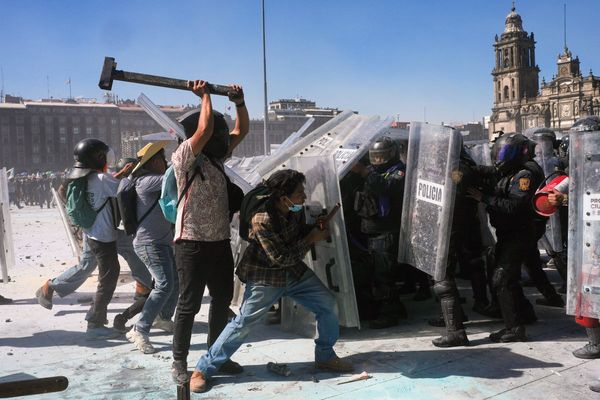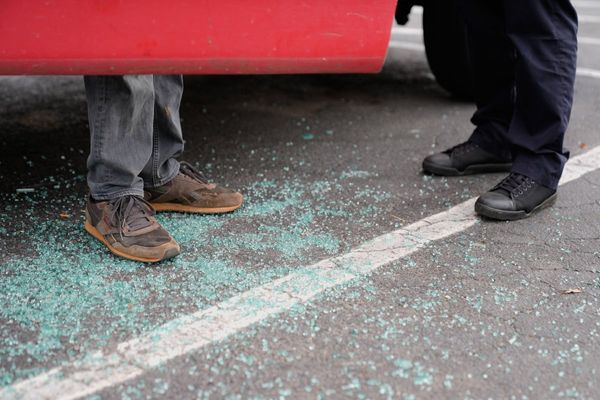
The boss of the Russian mercenary Wagner group said it could take Russia two years to seize the entire east of Ukraine in a rare interview that suggests at least some key figures in Moscow are gearing up for a protracted conflict.
Yevgeny Prigozhin, who has emerged from the shadows to become a high-profile figure since the start of the war, suggested Russia’s focus was now on capturing the rest of the Donbas region it has not occupied since the start of the war nearly a year ago.
Doing so would take “about one and half to two more years of work”, the ally of president Vladimir Putin said. If the goal was to occupy all of Ukraine east of the Dnipro River, this would “take about three years”, he said.
Ukrainian officials expect an imminent Russian onslaught, possibly before the first anniversary of the start of the war on 24 February, although a renewed advance on the capital, Kyiv, is not thought likely, after an advance failed badly last year.
One scenario, in line with Prigozhin’s comments, would see Russian troops trying to encircle Ukraine’s eastern army from the north and south, with tank columns crossing the international border in the direction of Sumy and Poltava, and advancing simultaneously from the occupied southern Zaporizhzhia region.

Prigozhin founded the Wagner group, a private military company, in 2014, but did not admit this until last September. Also known as “Putin’s chef”, Prigozhin has a catering business that hosts dinners attended by the Russian president.
Wagner operates as a Kremlin-sanctioned rival to Russia’s defence ministry and has been given responsibility for capturing the Donbas city of Bakhmut in a “meat grinder” battle that has cost thousands of lives over several months.
Speaking to a Russian blogger, Prigozhin claimed that Wagner troops were making gradual progress in Bakhmut, but acknowledged that Russian solders had not yet been able to capture it in some of the fiercest fighting since the start of the war.
“It is probably too early to say that we are close. There are many roads out and fewer roads in. Ukrainian troops are well trained and, like any large city, it is impossible to capture it from head-on. We are managing very well. First, we have to quietly take [Bakhmut] and then we can say loud and clear that we have taken it,” Prigozhin said.
Western officials have estimated that Wagner has about 50,000 personnel fighting in Ukraine. They estimate about 40,000 of them are convicts recruited from Russian prisons who were thrown into the frontline and ordered to attack the enemy with minimal training. But on Friday Wagner said it was no longer recruiting from prisons.
Prigozhin said he didn’t care if Wagner fighters “like the Third Reich”, or had “gang tattoos”, saying the only thing that mattered was “how you treat your brothers in arms” and carry yourself in battle. In the interview, he denied using prisoners as cannon fodder.
Earlier on Saturday, Volodymyr Zelenskiy renewed his appeal for fighter jets and said he was doing everything he could to persuade Ukraine’s western allies to give his embattled country “modern and effective wings” – despite doubts about whether the proposal is practical.
In a video address, Zelenskiy described his trip to the UK this week as “inspiring”, and paid tribute to Rishi Sunak, the British people and King Charles. He said he was happy to see Ukrainian soldiers – “our boys” – learning to drive Challenger 2 tanks at Lulworth Camp in Dorset.
Ukraine’s president said he had received “good signals” during his European “diplomatic marathon”, which included meetings in Paris and Brussels with the French president Emmanuel Macron, Germany’s chancellor Olaf Scholz and other EU leaders.
There is every prospect that western tanks and long-range artillery will be delivered to Kyiv in the coming months.

But there is less clarity on the supply to the Ukrainians of sophisticated combat planes. So far, only Poland has said it is willing to provide F-16 aircraft to Kyiv, but only as part of a wider Nato initiative. On Friday, the Biden administration indicated that any country could decide independently to offer western planes.
Ben Hodges, a former commander of the US Army Europe, said jets could play a vital role in Ukraine’s victory, and contribute to the defeat of Moscow within a year. Without them, it would take Ukrainian forces three to five years, given current levels of western support, he estimated.
“The sooner we deliver them the capability to achieve a decisive outcome, the sooner that [the war] could be over,” Hodges told the German public broadcaster Deutsche Welle.
At a press conference with Zelenskiy on Wednesday, Sunak said “nothing is off the table” when asked about the possibility of donating RAF fighters. But defence secretary Ben Wallace has been more cautious. It now appears Britain will quietly dampen down hopes of RAF Typhoons being sent to Kyiv this year, if at all.
London is emphasising the technical and political complexities of such a move. Wallace stressed on Thursday that any supply of western jets would probably be “post-conflict”, and has argued that Typhoons have all the complexity of “a Formula One team” because of the requirement to train engineers as well as pilots.
RAF insiders said about 100 ground crew were required for every six of the jets, and one estimated that training could take six to nine months for accomplished Ukrainian MiG-29 or Su-27 pilots, although one Ukrainian pilot told the Guardian last week it could take him three.
Another Ukrainian pilot told Sky News that, while he would be happy to fly a Typhoon if offered, “I don’t know how realistic this plan could be.” The jet was “very expensive” and limited in number, he said, arguing that the US F-16 would be a better option.
The UK has pledged to train pilots to operate Nato standard fighter jets and is due to receive the first batch of Ukrainian trainees in the spring. The Ukrainian government remains optimistic that “several” countries will provide fighters later this year. “It seems like it can be solved,” Andriy Yermak, the head of Zelenskiy’s office, said on Friday.
In his latest update, Zelenskiy said Ukraine was able to shoot down most Russian missiles with its existing air defences. But some got through, he conceded. Over the past 48 hours, the Kremlin has unleashed multiple waves of attack drones and ballistic missiles, striking targets across the country, in what may be “reconnaissance” attacks ahead of a bigger offensive.
Ukraine’s air force said it had shot down 20 Iranian-made kamikaze drones on Friday evening. They were launched at critical infrastructure from the eastern coast of the Sea of Azov. One hit an energy facility in Kryvyi Rih, Zelenskiy’s home town, causing serious damage.







